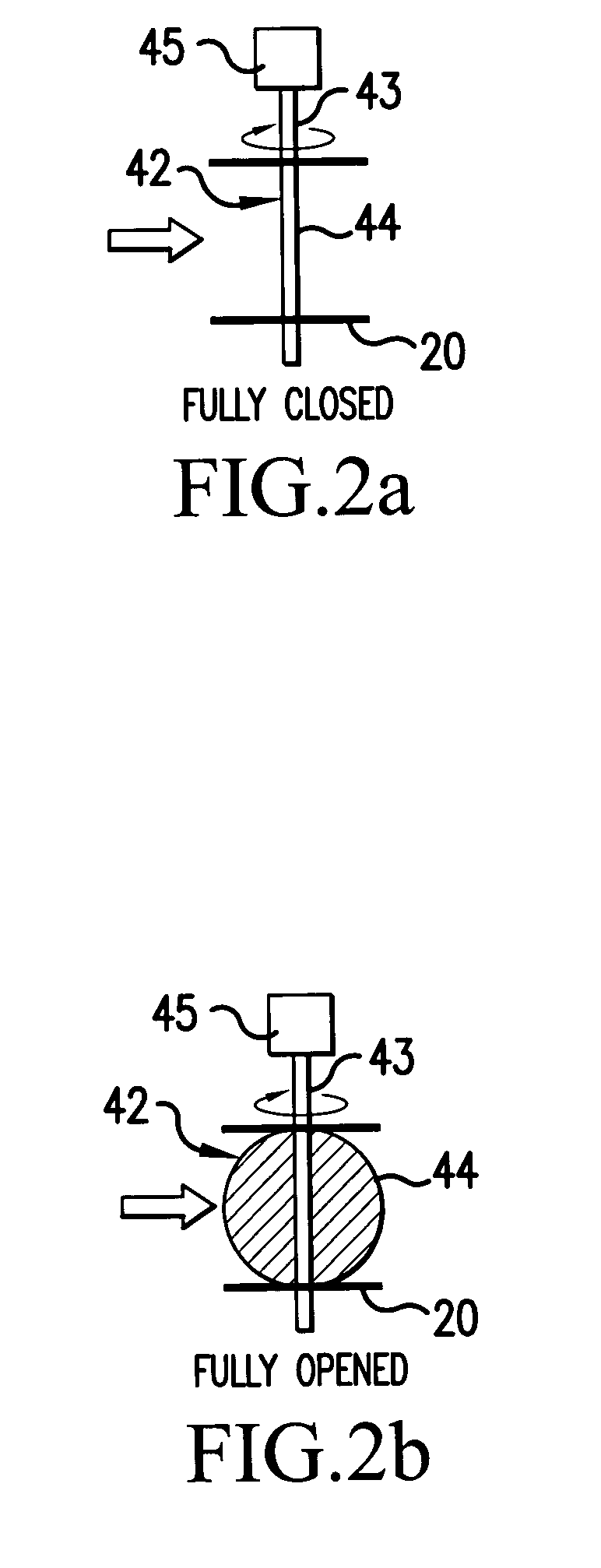Exhaust emission control apparatus for internal combustion engine
a technology of exhaust emission control and internal combustion engine, which is applied in the direction of electrical control, process and machine control, instruments, etc., can solve the problems of inability to increase the exhaust pressure, malfunction of the exhaust valve, and unburned substances such as hc, so as to reduce the harmful substances in the exhaust, reduce the cost, and detect the effect of harmful substances
- Summary
- Abstract
- Description
- Claims
- Application Information
AI Technical Summary
Benefits of technology
Problems solved by technology
Method used
Image
Examples
first embodiment
[0073]First, a description will be given of a
[0074]FIG. 3 is a flow chart showing a failure diagnosis routine according to the first embodiment of the present invention, and the following description will be given with reference to the flow chart of FIG. 3.
[0075]In Step S10, it is determined whether an exhaust flow control mode is being executed or not. Specifically, it is determined whether the ECU 60 has outputted an instruction for starting the exhaust flow control. If the determination result is True (Yes), the process proceeds to Step S12.
[0076]It should be noted that the exhaust flow control is carried out on the assumption that the exhaust gas temperature increase control is provided by the two-stage combustion operation, the compression S / L operation, and so forth, and thus, the determination as to whether control is provided in the exhaust flow control mode or not includes a determination as to whether the exhaust gas temperature increase control is being provided or not. A...
second embodiment
[0099]A description will now be given of a
[0100]FIG. 4 is a flow chart showing a failure diagnosis routine according to the second embodiment of the present invention, and the following description will be given with reference to the flow chart of FIG. 4. Here, a description of parts and elements corresponding to those of the above described first embodiment is omitted, and a description of differences will only be given.
[0101]According to the second embodiment, it is determined in the Step S10 that the exhaust flow control mode is being executed, and in the Step S12, the throttle angle θth is fixed at the predetermined value θtha, the A / F is fixed at the predetermined value AFa, and the ignition timing is fixed at the predetermined value SAa. The process then proceeds to Step S14′.
[0102]In the Step S14′, a predetermined deviation ΔNe2 serving as a determination threshold for the engine speed Ne is set according to the following equation (2):
ΔNe2=(target pressure (mmHg) / 100 mmHg)×0....
third embodiment
[0115]A description will now be given of a
[0116]FIG. 5 is a flow chart showing a failure diagnosis routine according to the third embodiment of the present invention, and the following description will be given with reference to the flow chart of FIG. 5. Here, a description of parts and elements corresponding to those of the above described first embodiment is omitted, and only a description of differences will be given.
[0117]In the Step S16, the sealed type opening and closing valve 42 is controlled to a predetermined angle (for example, fully closed) to suppress the flow of exhaust. Then, in Step S18″, as described above, in the state in which the exhaust pressure has been increased with the throttle angle θth being fixed at the predetermined value θtha, the A / F being fixed at the predetermined value AFa, and the ignition timing being fixed at the predetermined value SAa, the present engine speed Ne (second parameter) is found based on information supplied from the crank angle sen...
PUM
 Login to View More
Login to View More Abstract
Description
Claims
Application Information
 Login to View More
Login to View More - R&D
- Intellectual Property
- Life Sciences
- Materials
- Tech Scout
- Unparalleled Data Quality
- Higher Quality Content
- 60% Fewer Hallucinations
Browse by: Latest US Patents, China's latest patents, Technical Efficacy Thesaurus, Application Domain, Technology Topic, Popular Technical Reports.
© 2025 PatSnap. All rights reserved.Legal|Privacy policy|Modern Slavery Act Transparency Statement|Sitemap|About US| Contact US: help@patsnap.com



